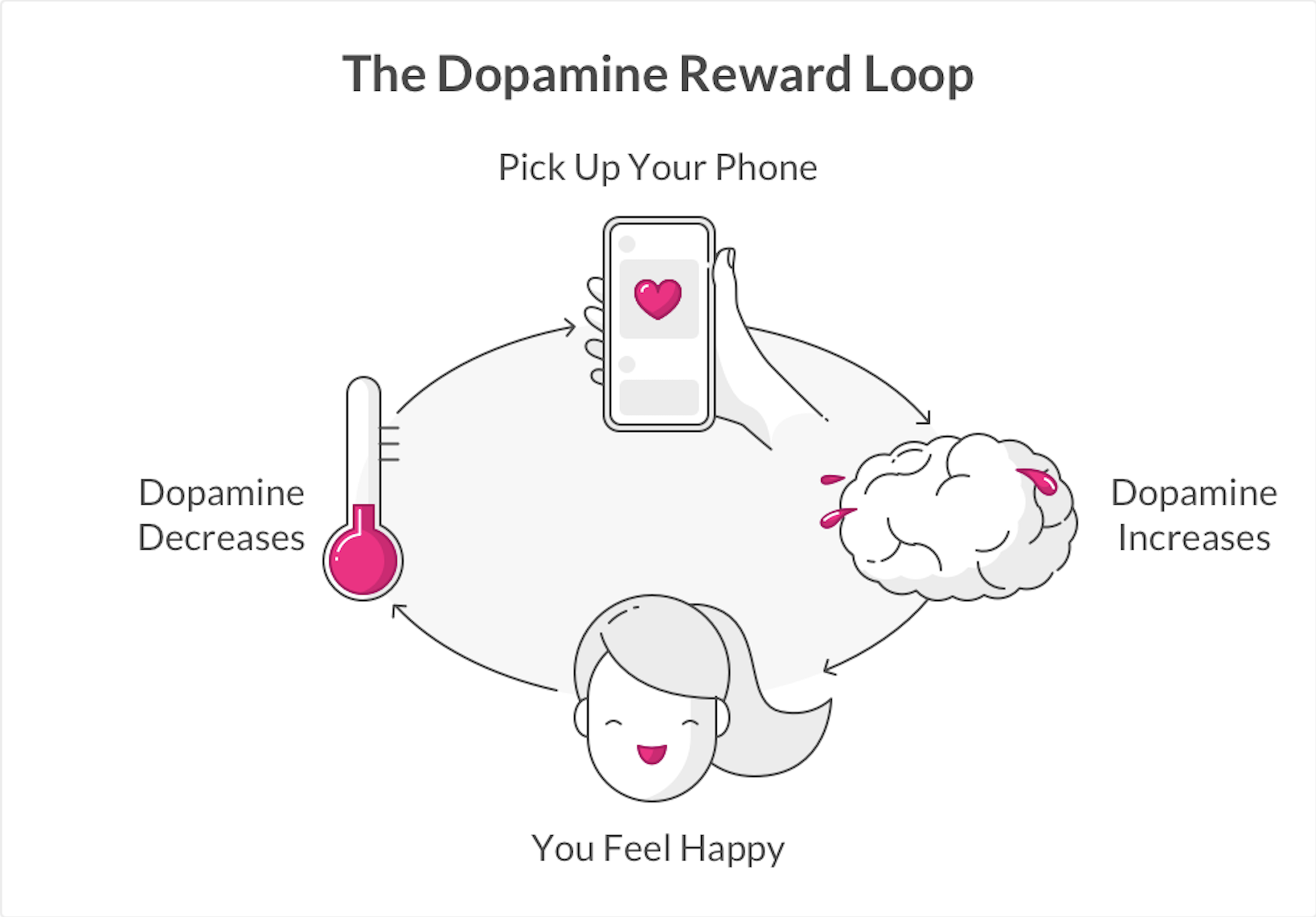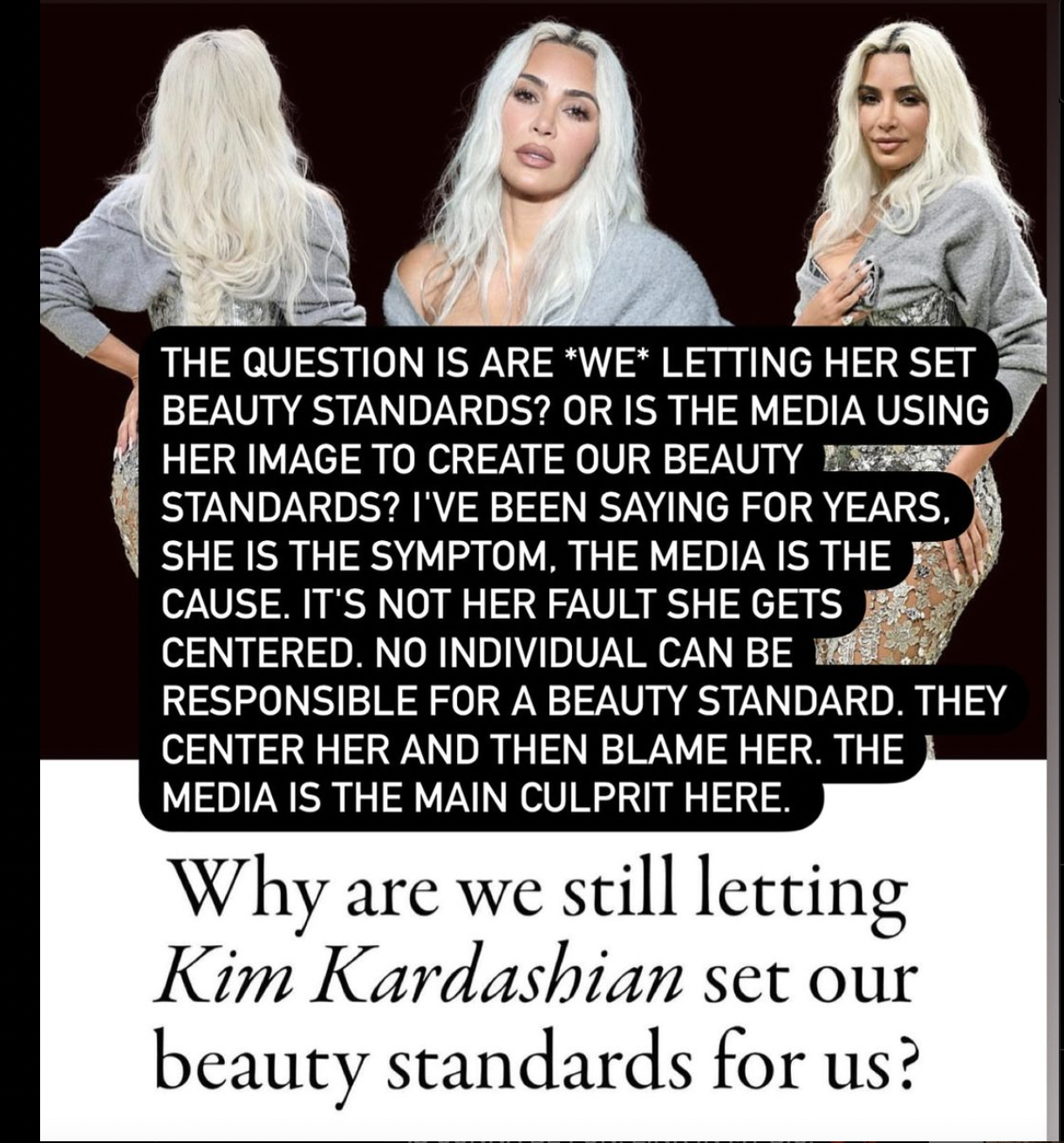Put Down Your Phones. It’s Time to Break the Dopamine Cycle.
As talking about mental health becomes more “mainstream,” the conversation is drawing attention to how we all seem to feel somewhat unhappy. Study after study is now diving into the proverbial elephant in the room: is there anything particular about this moment in time that leads to higher rates of mental health issues than in the past? Political instability? Chemicals in the food we eat? Climate despair? Social media?
For one, researchers have noted how people feel more isolated and lonely these days, despite being more interconnected than ever. It’s easy to point the finger at one cause or another, when the problem is likely a complex web of interconnected factors. But one certain contributor is changes in the way we interact with one another.
Everyone wants validation and attention. But the way we seek it out may leave us feeling deprived farther down the line, particularly if that validation is gained through social media. All that temporary attention releases dopamine, making us feel great for a minute but unfulfilled and anxious in the long run. And it’s making us depressed.
The dopamine loop
Dopamine is a neurotransmitter, or a chemical messenger used to communicate between neurons. It’s associated with the body’s reward pathways: dopamine is released during sex, when eating delicious food, gambling, or even through likes and engagement on social media.
Dopamine is a natural chemical that is healthy and vital in moderation; it’s what makes us feel good. The problem is when we enter a dopamine-driven feedback loop, a self-perpetuating cycle where we get addicted to the behaviours that release dopamine.
In general, feedback loops describe how one action feeds into another that leads to a repetition of the first action. For instance, if we post a picture that gets high levels of engagement, it makes us do it again, which releases more dopamine, making us more likely to do it again and so on, sending us into a never-ending dopamine spiral. This type of relationship is leading to obsessive compulsive and addictive behaviors, making people feel the “need” to post.
Moreover, these temporary spikes of gratification and euphoria only leave you feeling deprived later. It’s even worse when you recognize that the temporary high is coming from something that’s not real: you haven’t achieved something, you haven’t fallen in love or reached an important milestone in life, you simply posted a picture that gained people’s attention.
Where’s the reward in that? You may feel good for a moment, but that’s it – especially when you realize how fleeting it all is. This may make you feel even worse than before you received the dopamine spike, because you don’t really feel like you deserved it. You’re not doing anything particularly fulfilling or meaningful that warranted feeling a rush.
What’s more, studies show that social media-induced dopamine can actually rewire our brains to change our expectations for social interactions. That’s significant because humans are social creatures and evolved to depend on community for hunting and survival; and we were able to develop meaningful connections with one another through dopamine. However, social media interactions have been shown to release unnaturally high levels of dopamine, releasing much more than when you develop a friendship in person. As a result, we crave shallow interactions that provide instant gratification.
Breaking the cycle
But, here’s what really cool. We have the power to break this cycle.
Instead of seeking out temporary, fleeting highs, it’s better to indulge in behaviors and choices that promote emotional stability in the long run.
One way to do that is by practicing mindfulness and meditation. Train your brain to seek validation inwards, not from the outside. Don’t rely on other people’s attention to give you a “high” that makes you only feel happy for a moment.
You can also practice delayed gratification: do something that doesn’t give an immediate reward but provides a more valuable benefit in the future. Something as simple as developing healthy eating habits are a form of delayed gratification: eating vegetables might not make you feel as good as devouring fast food in the moment, but it will likely make you feel better later on. The underlying idea is to consciously practice saying “no” to something that will only give a temporary high.
Mindfulness and delayed gratification are thereby key to optimizing feelings of reward for long-term goals. Instead of doing something and instantly feeling good, these practices teach you to better invest in yourself and personal growth and development.
But can a more mindful approach actually reset your dopamine, especially if you’re dependent on the daily spikes from scrolling and content creation? This ties into the idea of a dopamine detox, which calls for a person avoiding all dopamine triggers for a select period of time to “reset” the natural levels.
Some individuals have promoted the idea of a dopamine detox as a solution, which calls for avoiding all dopamine triggers for a select period of time to “reset” the natural levels.
While there’s conflicting research about its impact, or if we even have the ability to stop the brain from releasing dopamine, we do definitively have the power to change the behaviors that give us artificially inflated levels of dopamine. It’s not necessarily about abstaining from dopamine, but investing in behaviors that stimulate our reward pathways naturally or more meaningfully.
Bottom Line
We know it’s hard the break the cycle, especially in the modern society we live in, even we find ourselves reaching for our phone unconsciously.
But there are ways in which we can can. To adopt a more mindful approach, consider downloading apps that monitor screen time and alert you after you’ve exceeded a certain amount. Alternatively, simply put the phone down and walk away. Leave the house without it. Charge it outside the bedroom. Simply make it out of reach more often, interrupting the unconscious habit. If you reach for it, and it’s not there, that’s going to make you think and reflect on what you’re doing, at least for a moment.
And when you feel the urge to grab your phone and post something, take time to ask yourself: why do you want to post, and who are you posting for? Are you just addicted to the feeling? In some ways, we all are.






